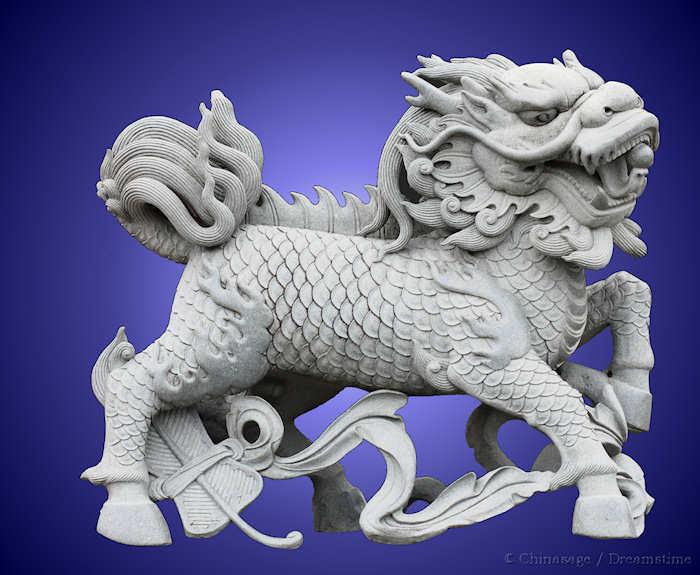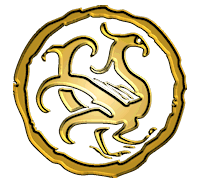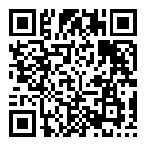Chinasage : All about China
China sage's information will be of use to anyone keen to learn more about the world's upcoming nation. We cover all aspects of China in hundreds of detailed pages which include all sorts of cultural traditions , descriptions of every Chinese province and history , including all the dynasties. We hope you make ChinaSage the home for your study of China.
You can also check out your knowledge of China with our Quiz section .
Traditions
About Chinasage
We’re building an extensive set of information all about China. We found other sites too detailed (such as Wikipedia) or just too old-fashioned. What we thought was needed was a carefully constructed site with strict editorial control so that everything is consistent and easy to navigate without clutter.
The name “Chinasage” came about because it can be read as either “China sage” (中 国 英 明 zhōng guó yīng míng ) or “China’s age” (中 国 时 代 zhōng guó shí dài ) , which promotes our new knowledge resource at a time when China has come of age in the world.
All the tea in China
Tea was the most important export that was weighed in the traditional Chinese unit of measurement called a 'catty'. It is known colloquially as the Chinese pound and is about 1.1pounds. In China it is known as the jin 斤 the word catty probably came from the Malay word. The modern weight is aligned to the metric system as exactly 500grams. The container for tea, a 'caddy', is believed to have been named after the measure.
Getting by in China There are many customs and traditions that you should know before traveling to China. Our customs page covers such things as giving gifts, banquets, sealing business deals and how to behave in public. A respect for age old traditions will impress your hosts who will appreciate your efforts to embrace the culture. Read more…
Chinese Calligraphy The Chinese language is a treasure trove of history and traditions. The language script has been in use for over 4,000 years. Fine historic pieces by the great masters continue to achieve as high a price at auction as great paintings. To appreciate Chinese writing it is important to know how the characters are made with the brush. Read more…
1,000 character language primer One of the most loathed books in human history must be the Thousand Character Classic. For 1,500 years schoolchildren had to learn the whole set of 1,000 characters by rote. It was more about calligraphy practice rather than for making conversation. It remains a fact that learning a couple of thousand characters is a challenge to even young minds. Read more…
All about the religions of China Untangling the religions of China is quite a challenge. There are three main belief systems (principally: Confucianism, Daoism and Buddhism) that have co-existed in harmony for a very long time. Islam, Christianity and Ancestor veneration are also described in our comprehensive guide. Read more…
Hares and Rabbits Hares and rabbits are treated as the same animal in China. Hares are associated with the moon as the Chinese saw a 'hare' rather than a 'man' in the moon. The Chinese moon rovers are called the 'Jade Rabbits'. Read more…
Chinese New Year China's main holiday is the Spring Festival held in late January or early February. It is a very busy time and the public holiday lasts a whole week. It is a time to go back to your family home and celebrate the new year together with numerous traditions and festive food. Read more…
All Chinese Festivals Our extensive section on Chinese festivals gives the dates and backgrounds on over 30 of them. Our festivals page has full details of the origin and observance of each of them as well as a handy diary for when they will next fall. Essential when planning a trip to China. Read more…
Foot binding The custom of binding the feet of girls from a very early age lasted from the Sui to the Qing dynasty and was at times inflicted on half of all girls. It was seen as a badge of wealth of a household because it implied that the family was rich enough to not need women to carry out physical work and kept them house-bound. Read more…
Cracking China book
Your A-Z key to understanding China
We are proud to announce a printed book all about China based loosely on this web site. It is a set of sixty topics in A-Z order covering everything from hair to kiwifruit, clapping to rhubarb, eunuchs to dragons. Buying a copy will help support Chinasage . Now available as a Kindle eBook for just $3.90.
Details... ➚
All the tea in China
Tea was the most important export that was weighed in the traditional Chinese unit of measurement called a 'catty'. It is known colloquially as the Chinese pound and is about 1.1pounds. In China it is known as the jin 斤 the word catty probably came from the Malay word. The modern weight is aligned to the metric system as exactly 500grams. The container for tea, a 'caddy', is believed to have been named after the measure.
History
Dip into history Our history section has a page for each major dynasty, for the whole period from the time of myths and legends 5,000 years ago all the way through the Han, Tang, Song, Ming dynasties to the last great dynasty the Qing. Read more…
The Great Wall of China The iconic vision of the Great Wall snaking its way up mountainsides is known the world over. It stands as one of China's great accomplishments - the awe-inspiring Great Wall. Although it stands for China's enterprise and indomitable spirit, it in the end proved an expensive waste of effort. Read more…
The early history of China from pre-history to 770BCE Most of the ancient traditions of China had become established 3,000 years ago. The institution of Emperor, the written scripts and the key technologies (including silk) all come from China's distant past. The longevity and continuity of Chinese culture are the two key principles to understanding China - even today. Read more…
4th May 1919 The Chinese reaction to the Versailles Treaty was the major turning point in modern Chinese history. Widespread student protests throughout the country led to a change in government policy and a refusal to sign the treaty. It was a nationalist movement calling for solidarity against foreign exploitation that was eventually to lead to a militarized Guomindang as well as the foundation of the Chinese Communist Party. Read more…
The South China Sea China lays claim to a vast area of sea as far south as northern Borneo. The sea contains two groups of islands: the Paracels and the Spratleys. China's claim is disputed by all the neighboring countries surrounding the South China Sea. The U.S. navy continues to provocatively sailed through the region and plans further naval maneuvers. Read more…
Relations with Taiwan - the One China Policy An exploration into the current debate about the status of Taiwan with a look into the complex history and some thoughts on the future. Read more…
苹 píng apple 艹 cǎo grass; herb radical 140, 平 píng flat; level; smooth]Origin The grass radical suggests its a food and 'ping' flat is the phonetic. Needs 'guo' to follow to mean apple 'ping guo' Full information for 苹
Geography
China's diverse geography China has deserts, mountains, lakes, rain forests and almost every other type of geographical feature you can think of. Our geography section has pages for each individual province as well as the great Yangzi and Yellow rivers. There are also pages on climate, cities, population, ethnic people, airports and universities. Read more…
The Hidden Kingdom Protected by mountains on three sides and the Yangzi river on the other, Sichuan has the feel of an isolated kingdom. Historically Chinese culture has held out longest here when China came under attack. It has hot, moist summers and has been heavily populated for two thousand years. Read more…
All about the provinces that make up China For each of the 33 administrative regions (provinces and major cities) we give a brief history, guide to visitor attractions as well as airports, universities, climate and major towns and cities Read more…
Best China Sights In this page we give information on the top attractions all over China to tempt you to explore further. Each attraction is clearly marked on a map and further information on each place is readily available. From furthest Heilongjiang to Hong Kong and Lhasa to Shanghai we have selected the top travel highlights. Read more…
Ancient province of Shandong The eastern province of Shandong sticks out into the Yellow Sea and has many historic attractions. It boasts the birthplace of Confucius and also the manufacture of Qingdao beer. The most sacred mountain in China - Taishan - has many ancient temples and memorials. Read more…
Understanding the Date and Time in Chinese Telling the date and time is essential for travelers. In China the Arabic numbers are used for writing but the Chinese characters are used for reading. Read more…
Language
The Chinese Language The Chinese language is rightly treasured as the country's greatest accomplishment. Our language section describes the language and its history. The section includes some introductory lessons and a guide to writing the characters. Read more…
How to write Chinese characters Many Chinese spend a great deal of time studying calligraphy. To be able to write (or more accurately paint) Chinese characters requires lots of practice as well as knowing both the brush strokes and the order in which to make them. Read more…
Chinese numbers Learning the numbers in Chinese is easier than in many other languages. In our complete guide to the numbers we include the traditions associated them. For example, do you know why 4 is unlucky but 8 lucky? Read more…
A survey of Chinese literature As both the book and printing were invented in China it is not surprising that Chinese literature has a long and distinguished history. There are a number of very famous novels from before the time of Shakespeare including The Romance of the Three Kingdoms and The Water Margin. Read more…
Water shortages
The Grand Canal that runs 1,100 miles from Beijing to Hangzhou was used principally to transport rice from southern China to the north. Like the Great Wall it represents a huge investment of human effort for a national benefit. A similarly vast project is in progress at the moment - the mass movement of fresh water from the wet south to the parched north. There are three lines of transport and one route is reusing parts of the old Grand Canal to bring water from the Yangzi to the Yellow River. Read more…
Bits and Pieces
We need your help to keep the Chinasage web site growing. We'd love to keep this web site completely free of advertisements like Wikipedia. Please consider becoming a Patreon subscriber for however little or much you can afford. We have been running this campaign for two months and have so far raised only 10% of our target. So please help… or else advertisements will make a comeback!
To read more and take out a subscription simply click on the Patreon Patreon
Many thanks, much appreciated.
Tue 20th Sep 2022Patreon pictures Thanks to the generous donations from Chinasage's Patreon ➚ sponsors we've just added quality photographs to many of our pages.
Although you can get images of all sorts of thing for free you do still have to pay for quality, particularly for specialist subjects. This time we have used 123rf for the new images who claim to have 200 million images to choose from. It takes a long time to make a choice and then they all need editing for usage, tagging and finally putting on the appropriate place on our hundreds of pages. We hope you will agree that they make a significant improvement.
New Year dragon, Shanghai Read more…
All the tea in China
Tea was the most important export that was weighed in the traditional Chinese unit of measurement called a 'catty'. It is known colloquially as the Chinese pound and is about 1.1pounds. In China it is known as the jin 斤 the word catty probably came from the Malay word. The modern weight is aligned to the metric system as exactly 500grams. The container for tea, a 'caddy', is believed to have been named after the measure.
Chinese coolies 1845-1880 When African slavery was made illegal in the UK and US, employers turned to China for supply of labor. The conditions were just as appalling as for the Africans. A technicality allowed employers to claim this was not slavery but Chinese were bought at markets and had little chance of returning home. This little known trade began in 1845 and lasted about 35 years before the Chinese and some foreign governments put a stop to it. Read more…
Corona virus outbreak 2020 All about the worrying outbreak of coronavirus in Hubei province, China in early 2020. History of the outbreak , symptoms, status and common myths on how to protect yourself. Read more…
Consult the Yi Jing We offer a free consultation for Yi Jing (I Ching) the Chinese system for fortune telling. It uses the ancient yarrow stick method and gives full information about the 'gua' (hexagram) that is chosen. The consultation takes account of user action - it is not random. Read more…
Chinese characters Some Chinese characters have their origin 10,000 years ago. The very old forms are simplified pictures of objects and animals. Later more abstract notions were represented in a simple way. Now there are a total of 200,000 distinct characters but fortunately only 2,000 are needed for everyday life. Read more…
Qilin also known as Kylin or Kirin, is a mythical Chinese creature that brings serenity and prosperity
Conventions
We use a consistent style for links within Chinasage. An internal link taking you to another page within our site is shown like this while a link to a page on any other web site is shown like this ➚ .
We use Chinese characters wherever appropriate. Most browsers should display both the characters and the pinyin correctly. We highlight any use of the older Wade Giles system for 'spelling' characters. Except where stated all characters are the modern simplified form used in the People's Republic rather than the traditional ones (pre-1970s). To help you learn Chinese characters many of the very common characters are highlighted thus: 中
Dates are given using the BCE/CE ➚ (Before Common Era and in Common Era) year convention rather than BC/AD. If a date is not followed by BCE or CE it should be taken as CE.
Authorship
All the text on the Chinasage web site is my own, I do not copy and paste from other web sites. I research each topic from a number of authoritative sources (mainly books ). The only exception to this are quotations and image credits. All text is our copyright and can not be used/copied without my permission. I am independent of any other company or government, the opinions expressed are my own. I do not receive funding or backing from any agency or organization .
Teacup Media (China History Podcast)
I am delighted to be able to promote links to Laszlo Montgomery's excellent Teacup Media ➚ series created over the last 15 years. Laszlo Montgomery ➚ has in depth knowledge of building commercial contacts with China over 30 years. The set of 290 podcasts totals 150 hours of audio commentary which covers every conceivable topic in Chinese history. Highly recommended.
Acknowledgments
I am extremely grateful to the many people who have put their photographs online for anyone to adapt and use. Without them this site would be very drab. If I am not using the image license correctly please let me know. I am grateful to Kim Dramer ➚ for permission to use her short videos all about Chinese culture and traditions. Patreon subscribers have supported the web site and allowed us to amongst other things purchase some quality images of China for use here. Some pages use Javascript ➚ to create special effects such as our airport table and calendar . I am grateful to the original authors for providing their code to be used and adapted by anyone else. The online Chinese dictionary uses the definitions from the CC-CEDICT project ➚ for which I am grateful for a generous free license. Sound files kindly provided by shtooka.net ➚ under a Creative Commons Attribution Share Alike License.
Feel free to contact Chinasage to point out any errors, omissions or suggestions on how to improve this web site.
If you would like to support my work and keep us independent become a Patreon or make a Donation via Paypal.


